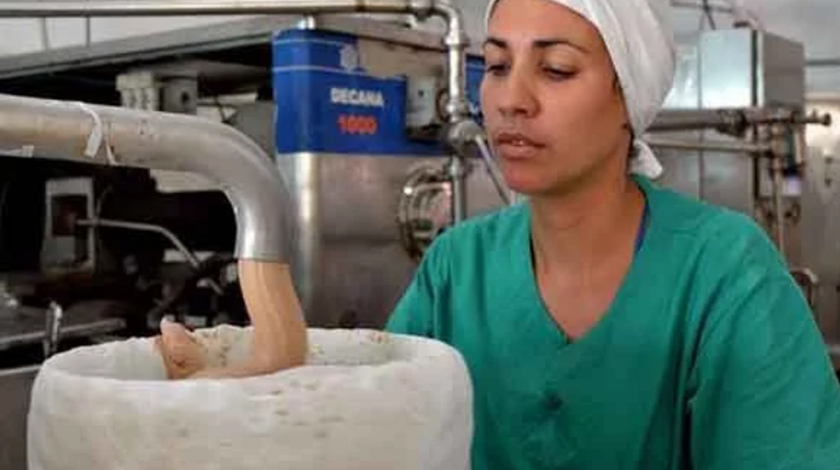![]()
The levels of milk that enter the entity today are sufficient to comply with the standard of 40 percent cream, which allows for a higher quality in terms of composition and texture

Camagüey, Cuba, Sep 7th.- Coppelia Ice Cream Factory in this province has the raw materials to maintain a daily production of 250 to 300 tubs of ice cream, destined mainly for the Base Business Unit (UEB) Complejo Coopelia located in this city.
This was stated by Amado Enrique Morell Espinosa, director of the entity, who also informed the Cuban News Agency that they deliver 400 liters of ice cream shake to the aforementioned UEB.
The manager pointed out that even when they were detained for several months due to the lack of raw materials such as the stabilizer, it was possible to resume production with all the ingredients required to make this food.
With a composition of seven percent vegetable fat, they produce pineapple orange, vanilla, mango, guava and chocolate ice creams through productive chains with the Canning Company and the Mipyme 1ro de Enero which guarantee natural fruit pulps.
The levels of milk that enter the entity today are sufficient, he argued, to comply with the standard of 40 percent cream that allows for a higher quality in terms of composition and texture.
Among the alternative productions is the preparation of a thousand liters of yogurt that are offered at the points of sale located at the University of Camagüey Ignacio Agramonte Loynaz, Agriculture and at Almendro Lácteo in front of the ice cream factory itself, indicated Morell Espinosa.
He also referred to the fact that for more than two months they have not had online sales because although they have capacity in technological equipment, they do not have the necessary resources to raise production levels.
In the Industry aniristas are verified in the different areas that achieve import substitution and keep a machine running with more than five decades of exploitation.
With regard to the attention of human capital, he highlighted that the brigades of workers in the yogurt area and the points of sale were remunerated by stimulation payment systems and reached from seven to 10 thousand pesos above the monthly salary.
This group, made up of 186 men and women, has as a short-term project, to incorporate the sale of prepared meals at affordable prices from the contracting with nearby peasants, with the purpose of advancing economically and being profitable.
(ACN)